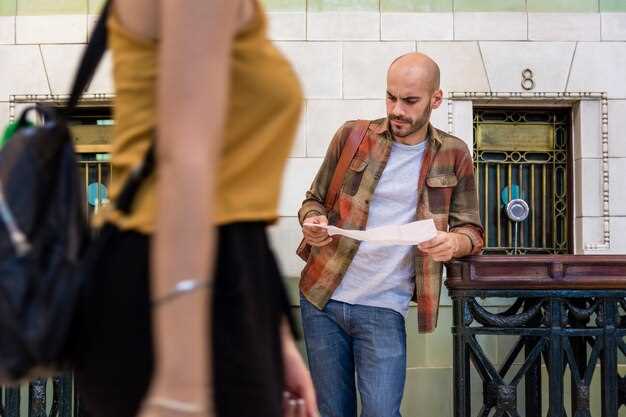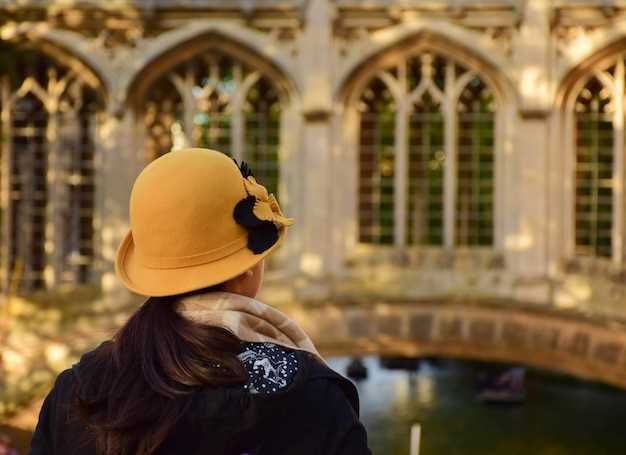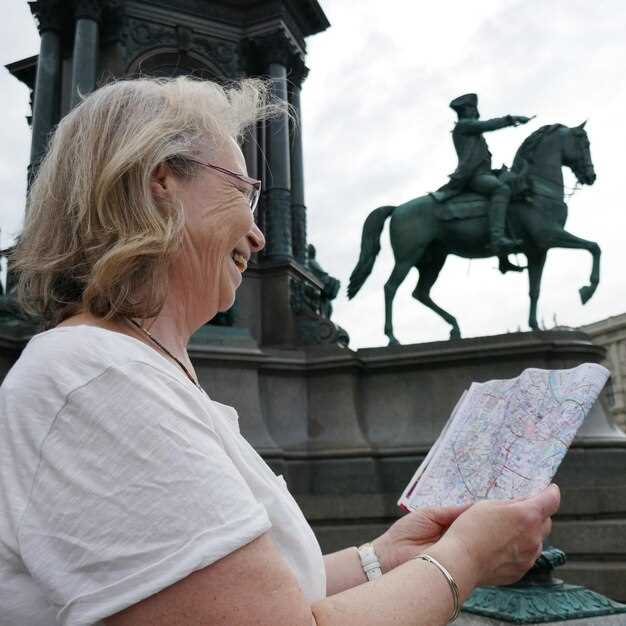
Recommendation: Hire a local expert for the Uffizi to maximize mastery of the palace’s must-see rooms, while keeping crowds manageable; having a guide keeps visitors focused, especially in the morning, and reduces time wasted wandering between halls, therefore helping you cover more highlights.
Before you decide which path to take, ask about the guide’s experience with the Uffizi’s layout and whether they can adapt a route within a limited window. A master guide is designed to tailor the visit to your interests, showing the stories behind the paintings rather than listing artists.
Prices vary by language, group size, and season; a private two-hour tour typically costs around 120–180 euros, sometimes more during peak weeks. Therefore, the guide’s secret to efficiency is showing the must-see pieces first and then revealing the context, ensuring you gain real mastery within a compact plan.
Compared with independent visits, a local guide helps you decide which rooms to prioritize, depending on your interests–whether you crave Renaissance portraits, mythological scenes, or architectural details.
Schedule a morning start to enjoy optimal light on canvases, with a useful pace that alternates between painting rooms and quiet corridors within the palace. The guide will be showing key works first, then introducing context as crowds thin.
For a final touch, ask about fast-track options or combination tours that include the nearby Uffizi courtyard and the Ponte Vecchio views–these add a secret dimension to the visit and help visitors leave with lasting impressions.
Uffizi Gallery Planning Guide

Arrive 20 minutes before your booked slot to check in and map a practical route through the palace, so you start with an easy pace and minimal backtracking. The disabilities policy ensures accessible routes and seating; request assistance if needed.
Plan a focused route with a local guide who can tailor the visit to your interests and keep you moving throughout the galleries at an easy tempo. They can highlight key artworks, the loggia, and the final rooms to avoid overload.
Keep the length to about 2 to 3 hours for a thorough overview; for a shorter experience, plan a 90-minute core route and leave deeper details for a second pass in italy, the florentine heart.
For families and mobility needs, uffizikids options keep kids engaged, while staff can adjust seating and provide wheelchairs, ensuring an enjoyable visit for everyone.
Wear florentine-appropriate, comfortable dresses or outfits and bring a light layer; corridors switch from outdoor courtyards to quiet galleries, so plan for varied temperatures. The path throughout the building favors even pacing, with table corners and benches for quick breaks.
Bring a compact bag, arrive with a map you can study at a loggia seat, and reserve a seat during peak times. You’ll finish in the final gallery feeling informed and ready to explore the garden and surrounding spots of italy with a new appreciation for masterpieces and the palace architecture.
How to Choose a Reliable Local Guide for the Uffizi
Choose a guide who is verified by florence tourism office and provides a clear, written plan for your visit.
Ask for a sample route that highlights the must-see rooms and works, with a timeline that fits your season and pace.
- Credentials and background: Verify license or affiliation with the official office; read recent reviews; ask how long they have conducted Uffizi tours and whether they focus on the gallery’s collection, including works by verrocchio and agnolo; frequently guide guests through this gallery.
- Language and communication: Ensure you can follow comfortably in italian or English; request a short pre-tour briefing to manage expectations.
- Depth of knowledge: A reliable guide can explain the birth of the Renaissance in florence through key pieces, point out verrocchio’s contributions, and connect paintings to their historical context.
- Tailored itinerary: Ask for a combo option that may include a quick boboli walk if time allows; ensure the plan prioritizes the must-see paintings while allowing for pauses at entry points and brief explanations for artworks in the Uffizi collection. Clarify that you want to cover highlights in a reasonable number of minutes rather than rushing.
- Logistics and tickets: Confirm whether tickets are included or if you must purchase separately; verify meeting point near the door, where to present entry, and how to handle discounts for family groups; check if the guide handles entry and tickets purchase or if you book directly with the official office.
- Family and pace: If traveling with a baby or a group, ask for shorter stretches, avoiding long lines, and built-in breaks; a well-paced tour keeps the heart engaged and reduces fatigue.
- Transparency and refunds: Require a written price, cancellation terms, and a clear plan for delays or weather-related changes; avoid guides who cannot share a fixed plan or timeline.
Before you hire, ask these questions: what is your focus for this Uffizi visit, which pieces will you highlight (including key works by agnolo and verrocchio), how long will we spend at each stop, and what will we do if crowds form at the most popular rooms? Also inquire about the best time to visit during the season and how to combine the Uffizi with nearby sites.
- Request a sample itinerary showing the must-see route through the Uffizi’s collection and the steps you will take to reach the door for the gallery entrance.
- Ask for a breakdown of costs, including discounts for students, seniors, or family groups, and whether tickets are included in the rate.
- Confirm the meeting point with the office and the exact start time to maximize the limited minutes available for viewing verrocchio’s works and agnolo’s contributions.
With the right local guide, you’ll discover the heart of florence’s art scene, enjoy friendly storytelling, and visit top pieces in a relaxed rhythm, creating a true opportunity to connect with the city’s history rather than a rushed purchase of tickets.
Best Times to Visit and How to Book a Guided Tour
Book an afternoon tour in December to enjoy lighter crowds and better light for photography.
The most comfortable times are midweek, especially Tuesday through Thursday, with mornings and early afternoons offering the best balance of space and visibility. Weekends attract long lines, so plan the visit during the breadth of the week. Arrive early for entry and let the guide lead you to the key rooms without rushing.
How to book: use the official Uffizi site or a trusted local tours company; youll get a specific timeslot and a guaranteed entry window. For wheelchair access, request accessible routes in advance; these things help everyone receive a smooth experience. Entry rules require a ticket in advance; you should receive a confirmation email after booking.
With a local guide, youll see the most important landmarks and learn about the display of masterpieces, including the goddess Venus in Botticelli’s Birth of Venus. The guide adapts the pace to your interests so you can enjoy everything without feeling rushed; the route is perfect for first-time visitors and for those seeking a focused experience with specific context.
Wheelchair access is supported on several routes, but always flag mobility needs when you book so the operator can tailor the route. Smoking is prohibited inside; if you smoke, use designated outdoor zones near the entrance. The entry counter is on the left side of the piazza, where youll pick up your tickets and join the group.
To keep things simple, book directly with the museum or with a reputable local operator. Check what the price includes–audio devices, reserved seating, or skip-the-line entry–and confirm cancellation terms. If youre traveling as familys, a private or semi-private tour can keep everyone engaged and maximize time with the guide. For a formal, structured option, ask for a small-group tour to balance attention and pace.
finally, verify the meeting point with your guide and confirm accessibility needs before you start.
Questions to Ask Your Guide on Arrival
Ask for the entry time and meeting point as soon as you arrive, and confirm how to enter the space where you’ll meet your guide.
Advisable to ask about the guide’s background: are they Florentine, what training they have, and how many Uffizi tours they lead weekly. If you’ve visited other galleries before, note what helped you enjoy the experience.
Request the route: which floors and galleries you’ll visit, and whether the baroque rooms are included. Ask about the layout to understand the path and where to pause for notes.
Clarify cost: guide fee, entry ticket, and any extra charges. Inquire about combination tickets, discounts, and whether the guide helps with scheduling that fits your day.
Ask about pace and crowd conditions: how much time at each stop, and how weekdays compare with busy weekends. If the space feels crowded, ask to adjust the route to avoid bottlenecks among tourists.
Request informational sources: a short blogpost list and recommended books, plus maps and quick notes you can take away from the visit. Use these resources to supplement the Florentine experience.
Finally, set expectations for flexibility: if you want to focus on a specific attraction or adjust the length, ask the guide to tailor the route to your interests.
Must-See Masterpieces and Hidden Gems to Cover with a Guide

Start with Botticelli’s Birth of Venus and Primavera in the central halls, then loop to Leonardo’s Annunciation and Bronzino’s court portraits to see mastery across styles.
With a private guide, you cover specific works and the stories behind them, including baroque drama, depictions of myth, and rich outfits of the Medici era. Your guide can tailor the pace, adapt for accessibility needs, and help you photograph highlights without missing gems along the way. In December, the opening light through the windows adds a soft glow to the paintings, making photos clearer and more evocative. Sundays can be busier, therefore a pre-booked private path across floors keeps the focus on the works you most want to see, not the crowds.
- Birth of Venus – Botticelli, c. 1484–1486; an icon for a reason: discuss pose, myth, and the pale figure against the blue mythic sky; great for a first, signature moment.
- Primavera – Botticelli, c. 1482–1485; explore the garden motif, allegorical figures, and Florentine symbolism; your guide can point out details in the clouds and the figures across the composition.
- Annunciation – Leonardo da Vinci, c. 1472–1475; examine sfumato transitions and spatial depth; note how light falls across the angels and Mary to reveal the painter’s mastery.
- Eleonora di Toledo – Bronzino; pick out fabric textures, jewelry, and the sitter’s position in the portrait, which reveals court life and fashion.
- Madonna with the Long Neck – Parmigianino; discuss mannerist elongation, architectural framing, and the tension between grace and distortion in the composition.
- Medusa – Caravaggio; focus on dramatic chiaroscuro, visceral emotion, and how the image challenges traditional sacred subject matter with raw realism.
- Adoration of the Magi – Gentile da Fabriano; notice gold leaf, intricate detail, and how the scene blends devotional focus with courtly display.
- Hidden gems across the collection – seek. Caravaggio’s Bacchus and other late-Renaissance works by Florentine masters sit in less-trafficked rooms, offering intimate study of technique and mood.
- Bronzino’s portraits beyond Eleonora – look for intimate likenesses of courtiers and family members; these smaller canvases reveal craft in texture and pose you might miss in the biggest scenes.
- Parmigianino studies and sketches – several preparatory works and altarpiece pieces illuminate the development of his elongated forms and spatial play.
Practical route tips: plan a standard 2–3 hour path to cover the core masterpieces, or extend to 4 hours for a deeper look at the hidden gems. Opening on Sundays and in December can vary, so confirm times with your guide and adjust the route accordingly. Bring a compact camera or phone for photos–flash is typically discouraged, so use natural light and steady hands. The guide will map an accessible route across the floors, prioritizing the rooms with the strongest depictions of baroque drama and the most specific details on outfits and fabrics. Have blankets or a scarf handy for the chilly December halls, and wear comfortable outfits and shoes to move across long corridors with ease. Here, you’ll gain focused insights into the masterpieces and the private, lesser-known canvases that deepen your appreciation for the Uffizi’s vast treasures.
Smart Routing: Time-Saving Paths Through the Uffizi
Begin in the loggia near the center and move directly into the main galleries to minimize backtracking.
heres the fastest map-friendly route: from the loggia, cross to the leonardo room, then proceed to the Galleria delle Carte Geografiche on the first floor, and finish in the duca wing along the central axis; this layout keeps you in touch with major pieces and reduces the number of passed doors.
planning around sundays and january helps you avoid crowds; this 90-120 minute trip focuses on leonardo and the map galleries, making the most of your time here.
Accessible routes exist, and the duca wing remains comfortable for wheelchairs or strollers; for uffizikids, tailor segments to short rooms and quick breaks; here you can highlight the architect’s ideas and point out details at the center of the plan, however you may adjust pacing to suit the group.
After the route, step outdoors for a break with drinks at a café near the center; the last rooms you visit tend to be quieter if you finish back near the entry, wont miss the highlights of your trip and you’ll leave ready for a smooth exit.
A Quick History of the Uffizi Gallery: Milestones to Know
Purchase timed-entry tickets online to avoid waiting and secure a route that matches your interests, especially if you are visiting in summer when crowds peak.
The Palazzo degli Uffizi began as a project in 1560, commissioned by Cosimo I de’ Medici and designed by Giorgio Vasari to house administrative offices and the expanding reach of Medici power. The rooftop silhouette and high façade announced a new era for Florentine public space, built to accommodate foot traffic and frames for state business as much as art.
By the late 16th century, the space started hosting a growing collection from the Medici, with works moved into rooms that would later become part of the gallery’s core. Since then, the corridor and galleries evolved to accommodate more items and to tell a longer story of Renaissance mastery alongside a living city route for visitors.
In 1769, the Galleria degli Uffizi opened to the public as a museum under Grand Duke Pietro Leopoldo, turning the building from a seat of administration into a beacon for art lovers around the world. The shift opened access to a wider audience and created a lasting interest in Italian masters across generations.
Throughout the 19th century, acquisitions and reorganizations strengthened the collection, and botticellis increasingly anchored the Renaissance narrative. Two botticellis remain central to the gallery’s public narrative, offering an accessible entry point for more than a casual look at high art. The museum’s holdings grew through gifts, exchanges, and careful curation to highlight items that speak to Florentine influence and broader European exchange.
In 1865, Italian unification placed the Uffizi under state ownership, with later decades shaping a display that balances historic rooms with more recent curatorial approaches. This period marked a transition from a royal-collection model to a national cultural archive, ensuring the works remain accessible within a longer course of public education and research.
Today, the Uffizi presents a quiet, high-impact experience for visitors who want to focus on specific sections or follow a guided route with a local guide. The layout supports both short visits around the main rooms and longer explorations that include side galleries, where you can pause, take in a detail, and plan your next steps without wasting time. For families, child-friendly corners exist, and the overall plan accommodates a thoughtful pace, especially in summer when heat and crowds peak. A well-planned blogpost can help you prepare a shorter visit or a longer course of exploration within the same day, taking into account exit points and the best moments to view certain items in natural light.
Two botticellis anchor the Renaissance period, giving eyes to the core narrative and inviting you to explore the broader collection that has shaped Western art since the 15th century. A smart plan for first-timers starts with a local guide who can tailor the route to your interests, whether you want to focus on painting technique, historical context, or notable items in the hall that showcase Florentine influence throughout time.
Table of Milestones
| 1560–1581 | Construction completed under Vasari to house Medici offices; rooftop silhouette becomes a city landmark. |
| 1769 | Open to the public as a museum under Grand Duke Pietro Leopoldo. |
| 19th century | Collection expanded and reorganized; botticellis become centerpiece of the Renaissance display. |
| 1865 | Unification places the museum under state ownership; modernization begins. |
| 20th century | Expanded wings and improved visitor flow; focus on conservation and accessibility remains strong. |
